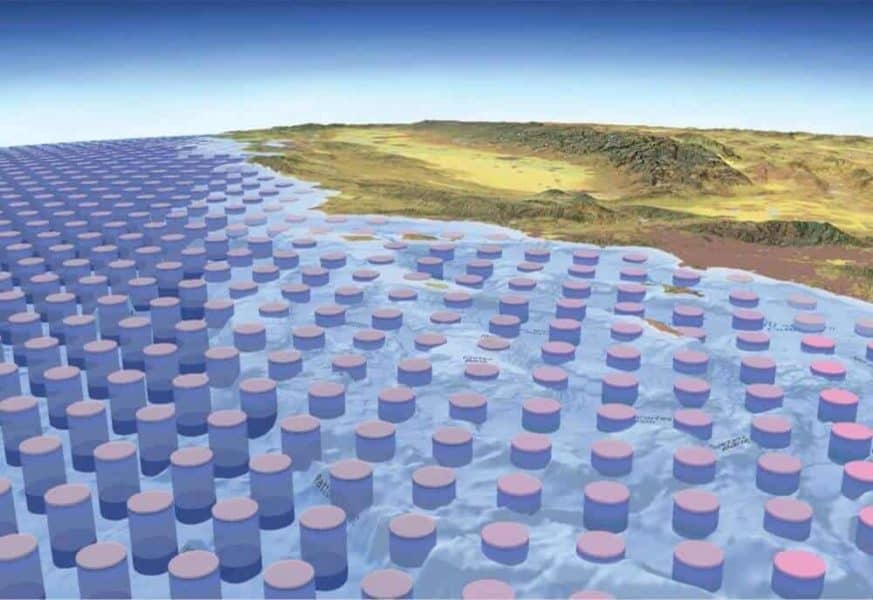The world’s oceans are vital to life on Earth. They provide food, moderate the climate, water the land, and drive the local and global economy. But the living conditions and resources in the enormous water masses of the open ocean have been mostly unknown and unmapped.
Baseline data needed to help scientists detect changes and to help nations protect living marine resources from depletion are now better understood thanks to state-of-the-art mapping technologies.
To meet the need for a consistent, objective, and complete description of open-ocean environments, the Group on Earth Observations charged USGS ecologist Dr. Roger Sayre with a task to map the world’s ocean ecosystems.
In response, the USGS formed a public-private partnership with ESRI, NOAA, academia, and non-profit organizations to produce the first ever detailed maps that group the entire global ocean into 37 distinct 3D ecosystems. The groundbreaking work to produce the first-of-its-kind, objective, and true 3D global marine ecosystems maps is described in two recent USGS-led publications in the journal Oceanography and an AAG Special Publication.
The resulting ecosystem data and maps are available in a web-based app called the Ecological Marine Unit Explorer. This app, also available for cell phones here or here, organizes an incredibly rich collection of data and provides a convenient open-data platform to facilitate science and marine resource management.
“The web-based app and cell phone apps are examples of appropriate technologies for exploring Earth’s most remote places,” said Sayre. “They enable an improved global understanding of a vast but limited resource.”
An Ocean of Marine Ecosystems Data
To define marine ecosystems, the team began with more than 52 million data points in NOAA’s World Ocean Atlas. Each point includes values for six chemical and physical attributes that influence marine life — temperature, salinity, dissolved oxygen, nitrate, phosphate, and silicate. The values were averaged over 57 years to provide a baseline for comparisons.
The data points are located every 17 miles like a 3D net cast across the global ocean surface with 102 knots that extend down the water column to a depth of 3.5 miles. Details on the data and methods for identifying 37 ecosystems are available in the journal Oceanography.
Using the Ecological Marine Unit Explorer
From the web or phone apps, users will see a surface map of the ecological marine units. Shades of pink indicate warmer units, and blue designates colder units. Users can click on any point in the ocean to see a vertical cross section of the ecological marine units and data for all six attributes at any depth.
A series of 37 maps that depict the global lateral extent of each ecosystem at various depths is available here and in the companion AAG Special Publication.
The Big Picture of Marine Ecosystems
Although the ocean is vast, marine life is not uniformly distributed throughout it, and some ecosystems are more biologically rich than others.
Waters near the surface generally contain more oxygen, are warmer, and sunlit. Down from the surface, light begins to fade and oxygen depletion is common. About one third of the world’s ocean waters are deep, dark, very cold, and saline.
Twenty–two of the 37 ecosystems are extensive and account for 99 percent of the ocean volume, while the remaining 15 are smaller, shallower, and occur near coasts. One very large ecosystem dominates the deep Pacific and Indian Ocean basins but is nearly absent in the Atlantic.
“The ecosystems in shallow ocean waters are smaller, sunlit, and more diverse. Beyond 220 yards depth, ocean waters become more twilight. Respiration becomes more important than photosynthesis, and to a certain extent living things are eaten rather than grown,” said Sayre
Other Future Work
The open-ocean maps provide a global- and regional-scale scientific resource, but a much finer spatial resolution is needed to map marine ecosystems along the global coastline, according to Sayre, who anticipates that as the next project.
Eventually, Sayre and colleagues hope to produce maps depicting global ocean environments decade by decade, year by year, and even seasonally, to enable comparisons from the 1970s to today. This will provide scientists important information for examining future ocean changes.


